The Leibniz-IZW is an internationally renowned German research institute. It is part of the Forschungsverbund Berlin e.V. and a member of the Leibniz Association. Our goal is to understand the adaptability of wildlife in the context of global change and to contribute to the enhancement of the survival of viable wildlife populations. For this purpose, we investigate the diversity of life histories, the mechanisms of evolutionary adaptations and their limits, including diseases, as well as the interrelations of wildlife with their environment and people. We use expertise from biology and veterinary medicine in an interdisciplinary approach to conduct fundamental and applied research – from the molecular to the landscape level – in close dialogue with the public and stakeholders. Additionally, we are committed to unique and high-quality services for the scientific community.
+++ Current information on African swine fever: The Leibniz-IZW conducts research on the population dynamics, on models of disease outbreaks in wild boars and on the ecology and human-wildlife interaction in urban areas. African swine fever is a reportable disease in domestic swine and therefor is the purview of the respective federal state laboratories and the Friedrich-Loeffler-Institut (Federal Research Institute for Animal Health) FLI. +++
News
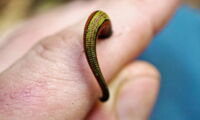
New tools for pandemic prevention research: DNA sequencing from water and leech bloodmeals reveal viruses circulating in the wild
In a new scientific investigation headed by the German Leibniz Institute for Zoo and Wildlife Research (Leibniz-IZW), water from African and Mongolian waterholes as well as bloodmeals from Southeast Asian leeches were assessed for the ability to retrieve mammalian viruses without the need to find and catch the mammals. The scientists analysed the samples using high throughput sequencing to identify known viruses as well as viruses new to science. Both approaches proved to be suitable tools for pandemic prevention research as they allow finding and monitoring reservoirs of wildlife viruses. For example, a novel coronavirus most likely associated with Southeast Asian deer species was identified. The results are published in the scientific journal “Methods in Ecology and Evolution”.
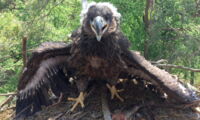
Juvenile white-tailed sea eagles stay longer in their parental territory than nest protection periods
The white-tailed sea eagle is known for reacting sensitively to human disturbances. Forestry and agricultural activities are therefore restricted in the immediate vicinity of the nests. However, these seasonal protection periods are too short in the German federal States of Brandenburg (until August 31) and Mecklenburg-Western Pomerania (until July 31), as a new scientific analysis by a team of scientists from the Leibniz Institute for Zoo and Wildlife Research (Leibniz-IZW) suggests. Using detailed movement data of 24 juvenile white-tailed sea eagles with GPS transmitters, they were able to track when they fledge and when they leave the parental territory: on average, a good 10 and 23 weeks after hatching, respectively. When forestry work is allowed again, most of the young birds are still near the nest. In a publication in the journal “IBIS - International Journal of Avian Science”, the scientists therefore recommend an extension of the currently existing nest protection periods by one month.

Unravelling the mysteries of seasonal reproduction in lynx
Most of the existing 39 cat species are threatened. Successful reproduction under breeding conditions is hindered by a lack of knowledge and appropriate techniques. Scientists from the German Leibniz Institute for Zoo and Wildlife Research (Leibniz-IZW) succeeded in testing the influence of selected hormones on cell cultures of domestic cats and translated the methods to wild cat species. This is a further milestone in studying the reproductive mechanisms of wild cat species and will help to improve assisted reproduction techniques. The scientific findings are published in the journals “Biology of Reproduction” and “Animals”.
Read more … Unravelling the mysteries of seasonal reproduction in lynx
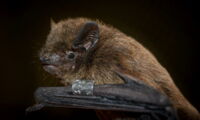
Cryptic sense of orientation of bats localised – the sixth sense of mammals lies in the eye
Mammals see with their eyes, hear with their ears and smell with their nose. But which sense or organ allows them to orient themselves on their migrations, which sometimes go far beyond their local foraging areas and therefore require an extended ability to navigate? Scientific experiments led by the Leibniz Institute for Zoo and Wildlife Research (Leibniz-IZW), published together with Prof. Richard A. Holland (Bangor University, UK) and Dr. Gunārs Pētersons (Latvia University of Life Sciences and Technologies) now show that the cornea of the eyes is the location of such an important sense in migrating bats. If the cornea is anaesthetised, the otherwise reliable sense of orientation is disturbed while light detection remains unimpaired. The experiment suggests the localisation of a magnetic sense in mammals. The paper is published in the scientific journal "Communications Biology".
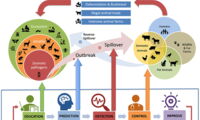
Young people and adolescents know too little about pathogens such as SARS-Cov-2 - which are reciprocally transmitted from animals to humans
A school-based scientific study in Italy, Austria, Germany, Slovenia, Mauritius and Japan shows that young people know too little about reciprocal disease transmission from animals to humans (zoonoses) and the integrative management of health risks (One Health concept). The results of the international study were published in the scientific journal Frontiers in public health.
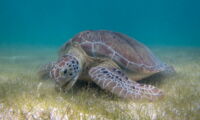
16 high-quality vertebrate reference genomes published: Leibniz-IZW and BeGenDiv contribute to a new era of quality and scale in genome sequencing
In a special issue of the leading scientific journal “Nature” and companion papers simultaneously published in other scientific journals, the Vertebrate Genomes Project (VGP) today announced 16 high quality, near error-free, and near complete vertebrate reference genome assemblies for species across all taxa with backbones (mammals, amphibians, birds, reptiles and fishes). This remarkable step towards a new quality and scale in genome sequencing of biological diversity – the largest genome in the project was 5 gigabases in size – will enable novel discoveries from life’s diversity. It was made possible by a decade-long collaboration among scientists all across the globe. The Leibniz Institute for Zoo and Wildlife Research (Leibniz-IZW) and the Berlin Center for Genomics in Biodiversity Research (BeGenDiv) contributed to this community effort by assisting in the development of the assembly pipeline, training of bioinformatics students in reference genome assembly and with the assembly and evolutionary analysis of three genomes: the Linnaeus's two-toed sloth (Choloepus didactylus), the collared anteater (Tamandua tetradactyla) and the green sea turtle (Chelonia mydas). Further publications based on these genomes for the three species are in preparation
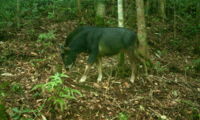
Loss of fauna in tropical forests impedes achieving Sustainable Development Goals
The international consortium of scientists and conservationists working towards preventing the extinction of the northern white rhino through advanced assisted reproduction technologies is pleased to announce that in March and April 2021, four additional northern white rhino embryos were produced. This is the most successful series of procedures – from oocyte collection in Kenya to in vitro fertilisation and cryopreservation in Italy – the team of Leibniz Institute for Zoo and Wildlife Research (Leibniz-IZW), Safari Park Dvůr Králové, Kenya Wildlife Service, Ol Pejeta Conservancy and Avantea has ever conducted. Additionally, the team confirmed the successful sterilisation of the southern white rhino bull Owuan, which was conducted in December 2020. The bull will now be introduced to the Ol Pejeta southern white rhino females that have been identified as potential surrogate mothers for future northern white rhino offspring.
Read more … Loss of fauna in tropical forests impedes achieving Sustainable Development Goals
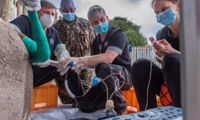
BioRescue creates four new embryos and gets ready for next steps of the northern white rhino rescue mission
The international consortium of scientists and conservationists working towards preventing the extinction of the northern white rhino through advanced assisted reproduction technologies is pleased to announce that in March and April 2021, four additional northern white rhino embryos were produced. This is the most successful series of procedures – from oocyte collection in Kenya to in vitro fertilisation and cryopreservation in Italy – the team of Leibniz Institute for Zoo and Wildlife Research (Leibniz-IZW), Safari Park Dvůr Králové, Kenya Wildlife Service, Ol Pejeta Conservancy and Avantea has ever conducted. Additionally, the team confirmed the successful sterilisation of the southern white rhino bull Owuan, which was conducted in December 2020. The bull will now be introduced to the Ol Pejeta southern white rhino females that have been identified as potential surrogate mothers for future northern white rhino offspring.




